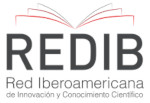Accessible Surface Design
Attributes for Textile Print Projects Aimed at Visually Impaired Individuals
DOI:
https://doi.org/10.29147/datjournal.v10i1.968Keywords:
Fashion Design, Surface Design, Visually Impaired, AccessibilityAbstract
Fashion and clothing are intrinsically linked to visual perception. For the creation of surface design, the two-dimensional and essentially visual space is employed in textile design projects. But how do people with visual impairments perceive the elements present in surface design? To address this issue, it is proposed to convey visually recognized information through tactile tags and internal labels. In this context, the general objective of this study is to outline the attributes necessary for the effective development of accessible projects for visually impaired individuals, focusing on the representation of surface design. This is a qualitative and descriptive research study, comprising a bibliographic review and field research conducted through interviews with visually impaired individuals and the production of high-fidelity prototypes in collaboration with a specialized company. The results indicate that the attributes suggested by the target audience, experts, and theoretical research reveal the general characteristics required for the creation of accessible projects for visually impaired individuals, focusing on surface design and its application in fashion products.
Downloads
References
ALBERS, Josef. Interaction of Color. Yale University Press, 2021.
BERSCH, Rita. Introdução à tecnologia assistiva. Porto Alegre: [Assistiva/Tecnologia da Educação], 2017. p. 20.
BRIGGS-GOOD, A. Design de estamparia têxtil. Porto Alegre: Bookman, 2014.
CARDOSO, Rafael. Design para um Mundo Complexo. São Paulo: Cosac Naify, 2013.
DONDIS, D. A. Sintaxe da linguagem visual. 3. ed. São Paulo: Martins Fontes, 2015.
INSTITUTO BRASILEIRO DE GEOGRAFIA E ESTATÍSTICA - IBGE. Censo Demográfico 2010: Características gerais da população, religião e pessoas com deficiência. Disponível em: http://www.ibge.gov.br/home/estatistica/populacao/censo2010/default.shtm. Acesso: 15. out. 2024.
FEITOSA, Adele Pereira. Composição visual no design de superfície: diretrizes para configuração de padronagens contínuas bidimensionais. Dissertação (Mestrado) – Universidade Federal de Pernambuco. Centro de Artes e Comunicação. Programa de Pós- Graduação em Design, 2019.
FREITAS, R. O. T. Design de superfície: ações comunicacionais táteis nos processos de criação. São Paulo: Blucher, 2011.
GOODMAN, E.; KUNIAVSKY, M.; MOED, A. Observing the user experience: a practitioner’s guide to user research. 2 ed. Amsterdam: Elsevier, Morgan Kaufmann, 2012.
LASCHUK, T. Workflow para o desenvolvimento de projetos de design de superfície com foco em estamparia têxtil para a área da moda. 2017. 289 f. Tese (Doutorado em Design) – Escola de Engenharia, Universidade Federal do Rio Grande do Sul, Porto Alegre, 2017.
PREECE, J; ROGERS, Y; SHARP, H. Design de Interação: Além da interação homem computador. Porto Alegre: Bookman, 2013.
RUBIM, Renata. Desenhando a superfície. São Paulo: Edições Rosari, 2004.
RÜTHSCHILLING, A. E. Design de superfície. Porto Alegre: Editora da UFRGS, 2008.
SENA, D. C. M. Etiqueta têxtil como contributo para a interpretação da cor pelos deficientes visuais. 2009. 125 p. Dissertação (Mestrado em Design de Moda). Universidade da Beira Interior, 2009.
RÜTHSCHILLING, Evelise Anicet. Design de superfície: prática e aprendizagem mediada pela tecnologia digital. Tese (Doutorado em Informática na Educação) - Universidade Federal do Rio Grande do Sul, Porto Alegre, 2002.
World Health Organization - WHO. Relatório Mundial sobre a Visão, 2019. Disponível em: https://apps.who.int/iris/bitstream/handle/10665/328717/9789241516570-por.pdf. Acesso: 6 out. 2024.
Downloads
Published
How to Cite
Issue
Section
License
Copyright (c) 2025 DAT Journal

This work is licensed under a Creative Commons Attribution 4.0 International License.


























